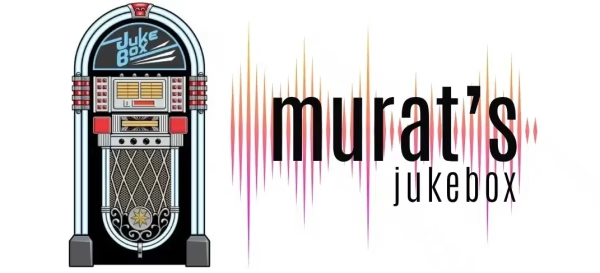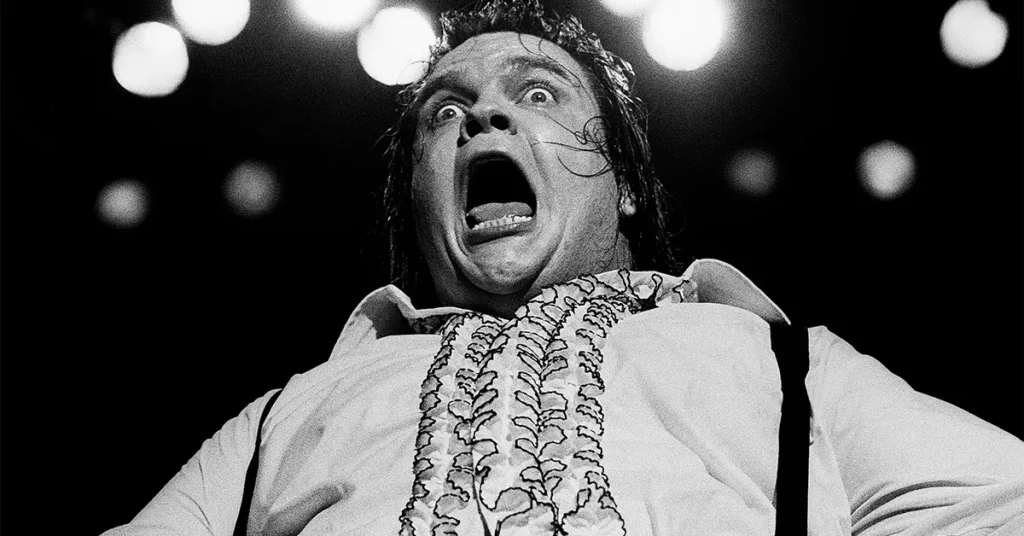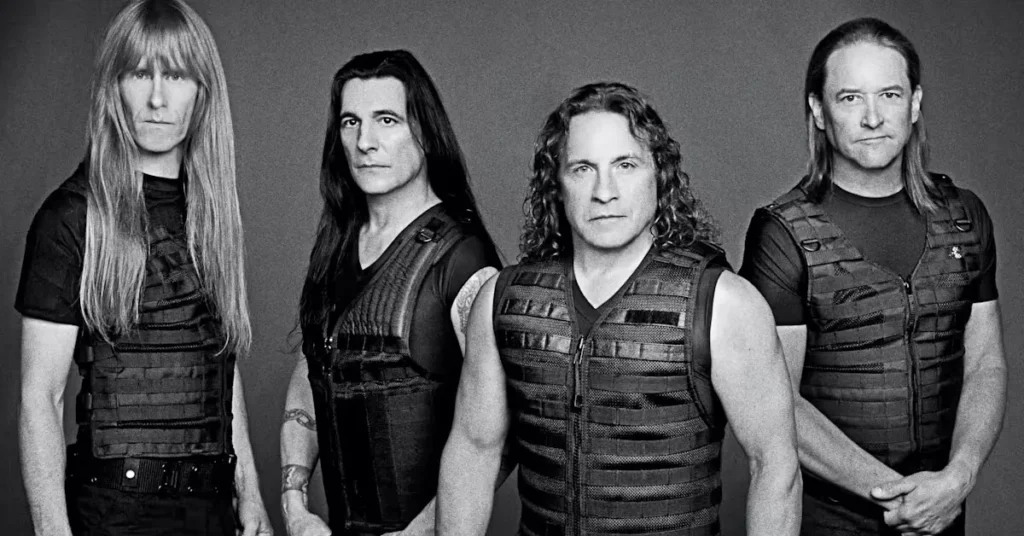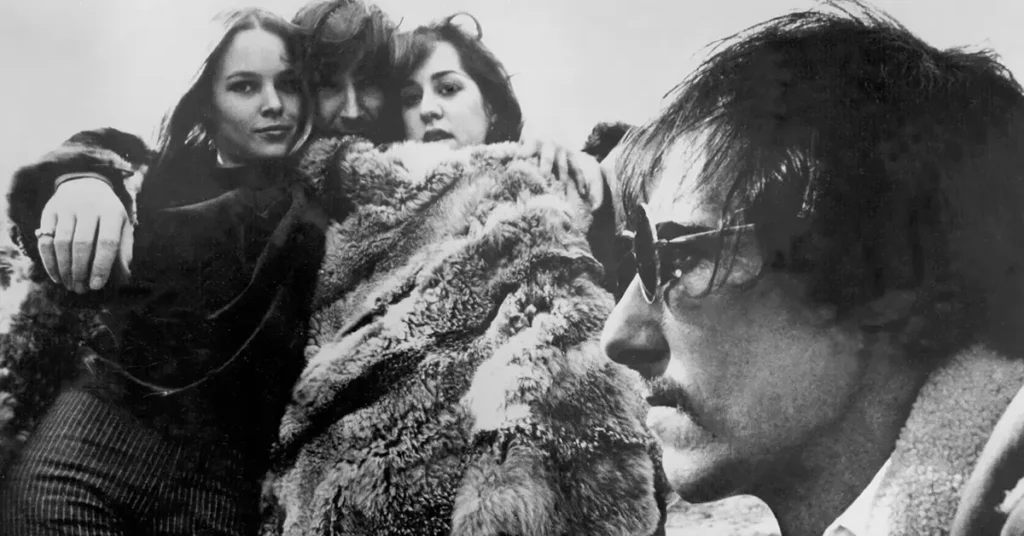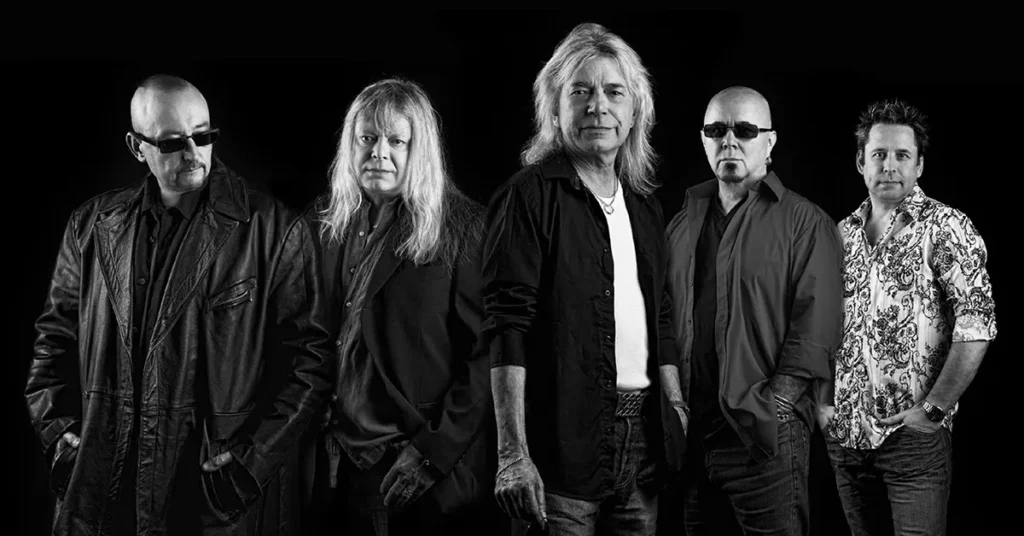Men at Work: Australia’s Quirky New Wave Ambassadors
Men at Work. Formation and Early Years
Formed: 1979
Origin: Melbourne, Australia
Men at Work. Classic lineup:
- Colin Hay – Lead vocals, guitar, primary songwriter
- Greg Ham – Flute, saxophone, keyboards, vocals
- Ron Strykert – Guitar, vocals
- John Rees – Bass
- Jerry Speiser – Drums
Colin Hay, a Scottish-born singer-songwriter, co-founded Men at Work in Melbourne’s pub rock scene, blending bouncy rhythms with sharp social observation. Their early gigs were marked by humor, energy, and instrumental variety, especially Greg Ham’s standout flute solos.
Men at Work. Breakthrough: Business as Usual (1981)
Their debut album became a global sensation, driven by two major hits and an instantly recognizable sound.

✦ Business as Usual (1981 Australia, 1982 U.S./U.K.)
- Spent 15 weeks at #1 on the U.S. Billboard 200, a record at the time for a debut
- Sold over 15 million copies worldwide
Men at Work. Key tracks:
- “Who Can It Be Now?” – Saxophone-driven paranoia-pop, reached #1 in the U.S.
- “Down Under” – A quirky, reggae-tinged anthem full of Australian references, topped charts in multiple countries
- “Be Good Johnny” – A childlike track told from the perspective of a misunderstood boy
“Down Under” became a cultural touchstone, often misread as patriotic when it was actually a satirical take on Australian identity and consumerism.
Men at Work. Continued Success: Cargo (1983)
Riding the wave of global fame, their second album was a strong follow-up.
✦ Cargo (1983)
- Reached #3 on the U.S. charts
- Singles included:
- “Overkill” – A darker, more mature hit that became a fan favorite
- “It’s a Mistake” – Anti-war in theme, with Cold War overtones
- “Dr. Heckyll & Mr. Jive” – A humorous song with synth-pop stylings
Cargo showed the band evolving beyond novelty hits, with more introspective and politically charged material.
Internal Tensions and Breakup (1984–1986)
Despite success, the band’s unity began to unravel due to:
- Creative disagreements
- Management disputes
- Colin Hay’s growing dominance in songwriting
By 1984, several members had departed. Men at Work attempted a final album:
✦ Two Hearts (1985)
- Featured mostly Hay and Ham with session musicians
- Commercially underwhelming
- Lacked the spark of the earlier albums
By 1986, Men at Work had disbanded, with Colin Hay launching a solo career that would span decades.
Solo Careers, Reunions, and Legal Troubles
✦ Colin Hay
- Became a critically respected solo artist, especially in the U.S.
- Songs like “Waiting for My Real Life to Begin” gained a second life via TV and film placements (Scrubs, Garden State)
- Known for his wry lyrics, storytelling, and acoustic performances
✦ Greg Ham
- Played with various bands, taught music, and occasionally reunited with Hay
- Tragically passed away in 2012
✦ “Down Under” lawsuit (2009–2010)
- A court ruled that the song plagiarized part of the Australian folk song “Kookaburra”
- Damaged morale and reputation, especially for Ham, who said it “destroyed part of his life”
Musical Style and Legacy
Men at Work’s sound combined:
- New wave and pop rock energy
- Reggae and ska rhythms
- Jazz and folk elements (flute, saxophone, layered arrangements)
Their lyrical themes blended:
- Whimsy and irony (“Be Good Johnny,” “Dr. Heckyll & Mr. Jive”)
- Anxiety and introspection (“Overkill,” “Who Can It Be Now?”)
- Satirical nationalism (“Down Under”)
Influence and Recognition:
- Pioneered Australian music’s global success, paving the way for acts like INXS, Midnight Oil, and Crowded House
- Their music remains radio staples, especially in Australia and North America
- “Down Under” is considered a national song — both beloved and debated
Interesting Facts
- “Down Under” topped both the Billboard Hot 100 and the UK Singles Chart, a rare feat at the time
- The band won Best New Artist at the 1983 Grammy Awards, the first Australian act to do so
- Colin Hay played himself on Scrubs and lent music to How I Met Your Mother, gaining a new generation of fans
- “Overkill” is often cited by critics as their most emotionally resonant song
